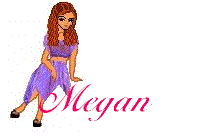Japanese Embroidery

Japanese embroidery is now mostly found on exquisitely hand-stitched Kimono and obi. Each motif and colour scheme has a meaning of its own, depending on the age of the wearer, season of use or to symbolise themes and legends. Proponents can spend a lifetime just studying these.
Traditionally, this form of embroidery is worked on very fine silk, using flat spun silk thread and metallic threads. It is worked on a specialist frame, the design of which goes back 1000 years.
This form of embroidery is taught in phases encompassing the different techniques, rather than learning individual stitches. These start from basic stitches, to laying foundations, working veins, stamen branches, special effects, padding, long and short stitch, laying stitching and goldwork.
Part of the pleasure of learning this technique is the understanding of the cultural traditions around it.
However, it is not a technique for the beginner embroiderer. Experienced stitchers looking for a challenge will enjoy this, and intermediate level stitchers will find that it will enhance their learning of techniques.
Nihon Shishu is completely different to Sashiko – which is a Japanese form of embroidery using running stitch and the design in simple lines and is used in quilting.
Sashiko is generally agreed to have evolved during the Edo period in Japan, and, like Nihon Shishu, the motifs often have meanings linked to traditions or Japanese legends.
Traditionally, Sashiko was stitched on an indigo dyed homespun cloth. Modern fabrics are more tightly woven than hand-woven ones, and the thicker needles and thread used in sashiko can make it harder to stitch on them. However, if you experiment with various fabrics you will find a weight that suits your stitching style.
Sashiko thread is slightly heavier than quilting thread and is a soft spun cotton. If you can’t find Sashiko thread, a fine perle cotton or embroidery cotton (not a stranded floss – DMC flower thread is a good approximation) can be used.
Sashiko embroidery is great for beginner stitchers, or cross stitchers who are looking to move into freestyle embroidery.
Recommended Reading
Sashiko Style: Traditional Japanese Patterns for Contemporary Design
Traditional Japanese Embroidery
The Techniques of Japanese Embroidery
Is there anything that you would particularly like to see an article on? If so, please contact me with your suggestions.
Happy Stitching

© 2011 Megan McConnell
This site needs an editor - click to learn more!

Related Articles
Editor's Picks Articles
Top Ten Articles
Previous Features
Site Map
Content copyright © 2023 by Megan McConnell. All rights reserved.
This content was written by Megan McConnell. If you wish to use this content in any manner, you need written permission. Contact
BellaOnline Administration
for details.


